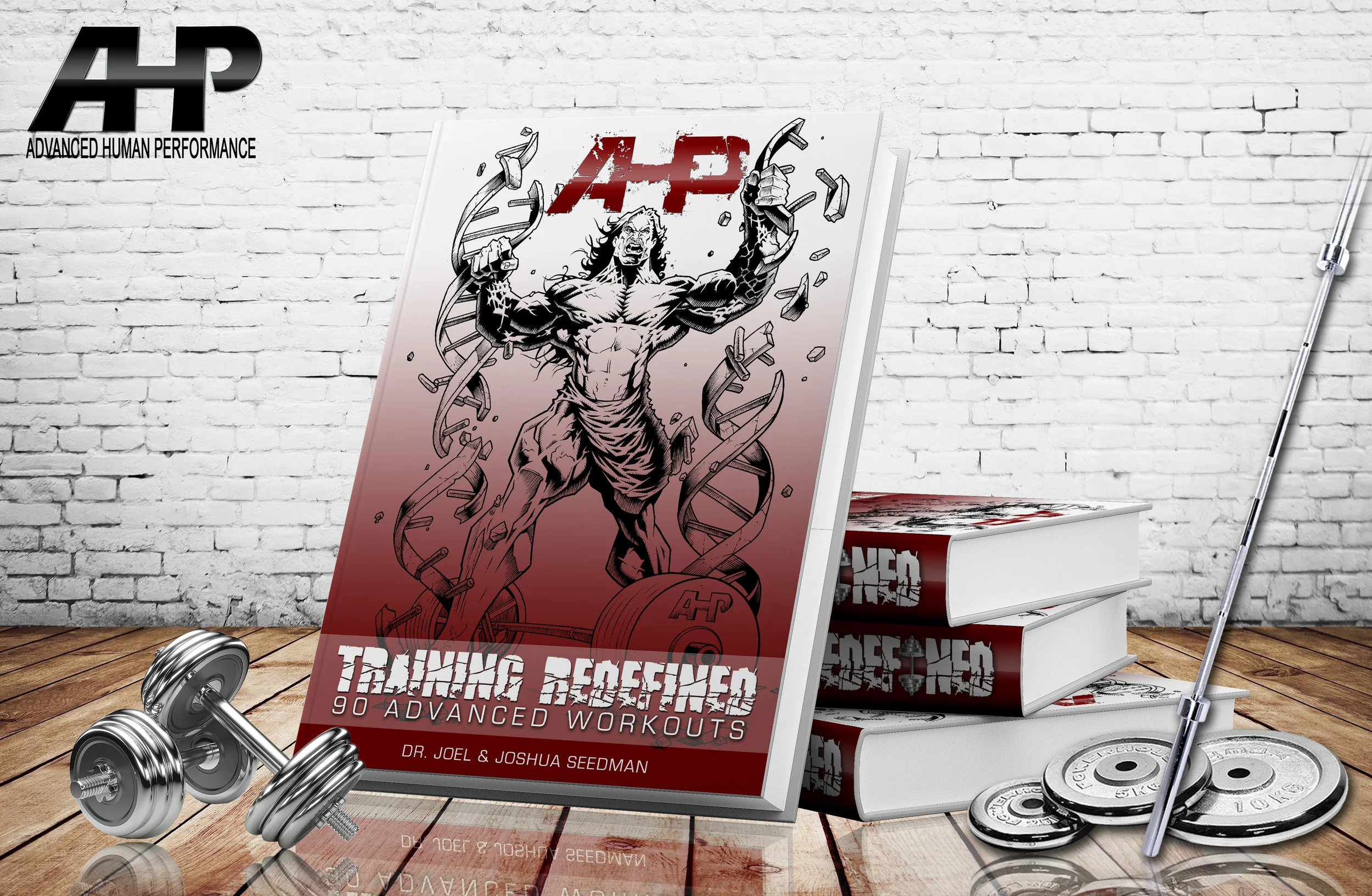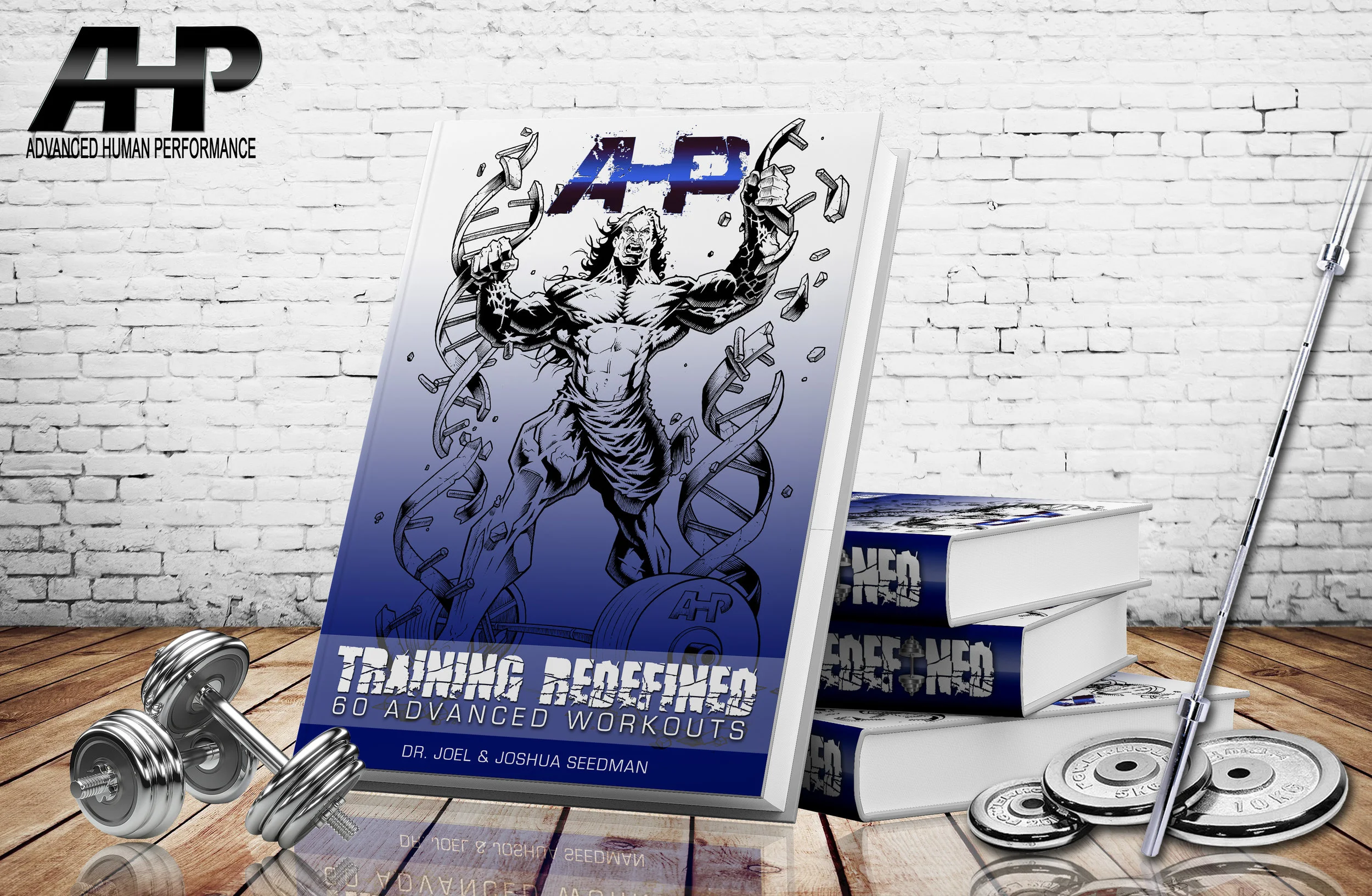UNIQUE KETTLEBELL EXERCISES
- CRUSH YOUR BICEPS -
Dr. Joel Seedman, Ph.D.
This is an extended version of an article originally featured on T-Nation.
Curls performed with barbells, dumbbells, cables, and machines are the most common methods for targeting the biceps. However kettlebells provide exclusive benefits and unique bicep stimulation that are difficult to replicate with other training tools including standard free-weights. Here are six variations of bicep curls performed with kettlebells that are sure to give you newfound arm growth.
1. Standing Kettlebell Bicep Curl
Standing bicep curls are a potent mass-builder simply because standing mechanics represents the strongest position for allowing maximal overload and ultimately heightened levels of growth. However, standing kettlebell curls may represent an even more effective variation than traditional barbells and dumbbells.
Due to the nature of the kettlebells, there is significantly more constant tension throughout the movement including the top contracted position. As a result of you’ll have greater muscle fiber innervation and motor unit recruitment. Besides the bell hanging below the writs which creates a constant pulling sensation on the biceps, it’s almost impossible to alleviate tension at the top of the movement by cheating and curling the weights too high.
In fact over-curling at the top of a bicep curl is a surefire way to take stress off the biceps and overtax the anterior deltoids. With this variation, the kettlebells pressing against the forearms will inhibit this common cheating technique as it feels very unnatural and uncomfortable to bring your hands beyond chest height. In addition, any swinging or excessive use of momentum will also result in the kettlebells banging against the forearms creating a very unpleasant experience. In essence the kettlebells force you to use proper curling technique as typical cheating methods become limited if not completely nullified.
Although execution is similar to other bicep curl variations, one notable difference is hand positioning. For all kettlebell curls, it’s best to have the handles resting in the mid-upper palms of your hand rather than the lower palms and finger as this locks the kettlebells in and keeps them from rotating and slipping. Finally, you’ll want to resist having your arms fully straighten at the bottom of the movement as this will release tension from the biceps as well as cause the handles to slip out of your palms.
Due to the high levels of continuous tension and bicep innervation, I recommend using slightly lower reps which not only allows greater taxing of fast twitch muscle fibers but also ensures form and technique don’t degrade. Several sets of 5-8 reps will more than suffice for this growth-inducing bicep movement.
2. Incline Kettlebell Curls
Dumbbell incline curls are a bodybuilding staple as the simultaneous stretch and overload has been scientifically shown to maximize micro-trauma and muscle damage, thereby eliciting significant levels of muscular hypertrophy. Unfortunately when performing this movement with dumbbells there’s very little tension above the bottom half of the movement. As a result this allows tension reduction and bicep relaxation at the top portion of the curl. Due to their unique loading mechanism created from the hanging weight, kettlebells alleviate this issue thereby providing adequate tension and stimulation not only in the bottom and mid-range positions but also in the top contracted position. As a result incline kettlebells curls become a highly potent mass builder for the biceps.
In fact this incline kettlebell curl variation exploits all three major mechanisms of muscle hypertrophy. First, the emphasis on the elongated eccentric and stretched position produces muscle damage and micro trauma that’s shown to be critical for muscle growth. Second, due to their semi-awkward nature and unique hanging position kettlebells require high levels of muscle activation, which produce significant amounts of mechanical tension and muscle fiber recruitment - another factor that’s pivotal for maximizing size. Third, because of the constant tension provided throughout the movement with little relaxation of the biceps, this creates an occlusion-effect to the surrounding musculature. As a result, there’s an incredible amount of blood flow, muscular pump, intramuscular volumization, cellular swelling, and metabolic stress all of which have been linked to triggering muscle hypertrophy.
To maximize all three of these components I recommend performing incline kettlebell curls at a 45-degree bench angle using a variety of loads and corresponding rep ranges including heavy weights (4-6 reps), moderate loads (8-10 reps), and lighter loads (12-15 repetitions). 1-2 sets in each rep range will more than suffice for triggering incredible gains in biceps size.
3. Kettlebell Hammer Curls
The hammer curl with kettlebells is a great bicep and biceps brachialis exercise that also heavily taxes the forearms as well as smaller muscles around the hands and wrists. Due to the nature of the unique loading mechanism, the movement finishes with the kettlebells in an extended lever arm position, making it highly difficult yet extremely effective for placing constant tension on the arms throughout the movement.
You’ll also need to reduce the weight by approximately half of what you would typically use for hammer curls as these are incredibly challenging. However, the lighter loads combined with constant tension will leave your biceps screaming at the end of each set producing muscular pumps and cellular swelling difficult to replicate with other movements.
Because of the lighter loads you’ll be forced to employ, kettlebell hammer curls are conducive for moderate and higher rep ranges of 8-15 repetitions of approximately 2-3 sets. Just remember to keep your wrists locked in neutral position throughout as this will maximize the both effectiveness and safety of the movement.
4. Kneeling Alternate Kettlebell Curls from Contracted Position
If you’re looking for one of the most challenging yet growth-inducing bicep movements you’ll ever perform, the kneeling kettlebell curls performed in an alternate fashion from the contracted position is just what the doctor ordered. This is due to the incredibly strict form and reduced momentum required to maintain balance combined with heightened levels of continuous tension on the biceps. Although it sounds a bit complicated its actually quite simple. While kneeling on a bench, curl both of the kettlebells to the top contracted position (approximately mid chest height), lower one arm, perform a bicep curl, then repeat with the opposite arm.
The key is holding the non-moving arm in the top contracted position throughout while alternating from side to side each repetition. Performing this same protocol with dumbbells is not nearly as effective as the top of the dumbbell curl typically involves little tension thereby providing a semi-rest period during the isometric phase. However, because of the kettlebells’ unique loading features, the top position is actually quite taxing on the biceps provide constant tension with little if any relief throughout the movement. In addition, the kneeling position ensures the lifter does not twist or contort their body as a means of intentionally providing tension relief to the arms, as any squirming, shifting, or cheating, will result in loosing your balance and dumping the load.
Because of the significant time-under-tension (TUT) effect and extended time between repetitions, 2-3 sets of 5-7 reps per arm will more than suffice for this grueling bicep movement. As you approach the end of each set, the pain will be almost unbearable however the results in terms of growth and strength accruements will be worth the momentary discomfort.
5. Isolateral Kettlebell Squat and Curl
Performing kettlebells curls while holding an eccentric isometric squat position produces incredible levels of tension in the biceps particularly in the top contracted position of the curl. Rather than leaning back at the top of the movement (a common tendency to subconsciously release tension from the biceps), the squat position forces the lifter to stay slightly leaned over. This slightly angled position combined with the hanging nature of the kettlebells provides continuous levels of significant tension throughout the movement thereby creating occlusion and cellular swelling of the biceps.
In addition the rigid squat position leaves little to no room for cheating or using momentum to help lift the weight. This forces the lifter to rely solely on smooth yet forceful contractions of the biceps to complete the movement. The resulting levels of intramuscular tension and metabolic stress turn this simple squat and curl motion into an incredibly potent stimulus for eliciting growth in the arms.
As an added bonus the this movement does wonders for enhancing lower body mobility, hip mechanics, and squatting technique as the lifter will be required to spread the knees and unlock the hips order to fit the kettlebells between their legs. 2-3 sets of 6-10 controlled repetitions will be ideal for crushing the biceps without unnecessarily fatiguing the lower body.
6. Reverse Bottoms-Up Biceps Curls with Kettlebells
The reverse bottoms-up kettlebell curl provides several unique features all of which promote increased activation and hypertrophy in the biceps. First, to ensure the lifter doesn’t dump the load this variation prohibits the individual from fully straightening the arms at the bottom or curling excessively high at the top. This creates enormous tension on the biceps as you’re locked into the sweet spot of the movement where there’s maximal activation and no relaxation.
Second, this curling variation promotes optimal shoulder positioning and postural alignment, which is something most lifters struggle with when training biceps. Because the load is unstable and vulnerable to falling, this forces the lifter to keep the shoulders retracted and depressed throughout. Besides improving spinal mechanics this does wonders for crushing the biceps as it eliminates the possibility of the shoulders becoming overly involved in the movement.
Another noteworthy feature of the reverse bottoms up curl is its ability to optimize wrist mechanics. Many individuals lack the ability to keep the wrists locked during curls, which can ultimately produce strain on the surrounding connective tissue, tendons, and ligaments. This variation requires the lifter to lock the wrists in order to create a solid platform for the weight to rest on. Transferring these mechanics to heavy free weight curls will produce stronger and more efficient curling mechanics inevitably allowing greater overload and size gains.
Lastly, this is one of if not the most unstable bicep curl variations you’ll ever perform. Any cheating, use of momentum, swinging, or cheating will result in dumping the load. This ensures the lifter uses smooth mechanics and controlled motions ultimately inducing a significant hypertrophy stimulus to the biceps.
I recommend using this either as a technique enhancer at the beginning of your arm workouts (2 sets of 5-8 reps) to help groove proper curling mechanics or as a finisher (1-2 sets of 10-12 reps) to annihilate the arms with continuous levels of growth-inducing tension.


































